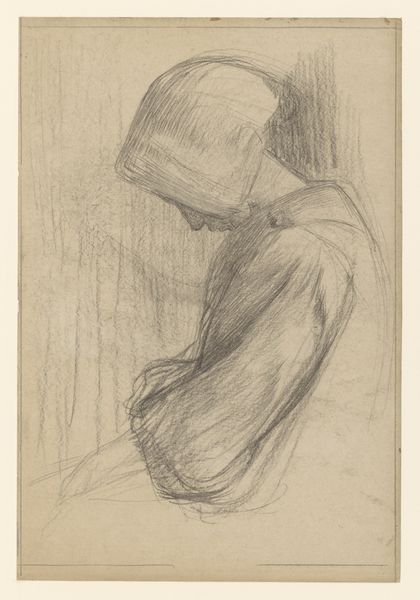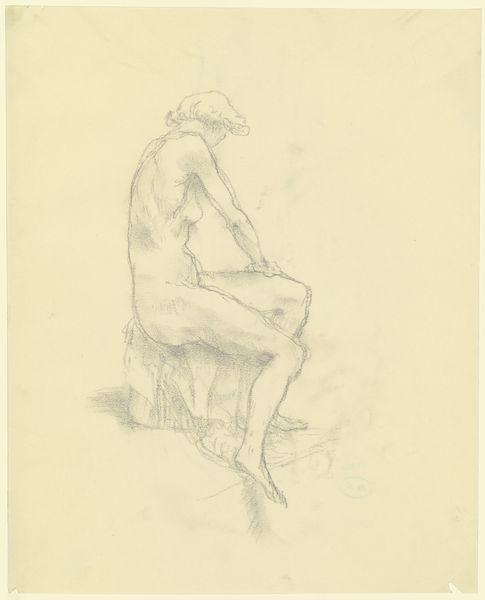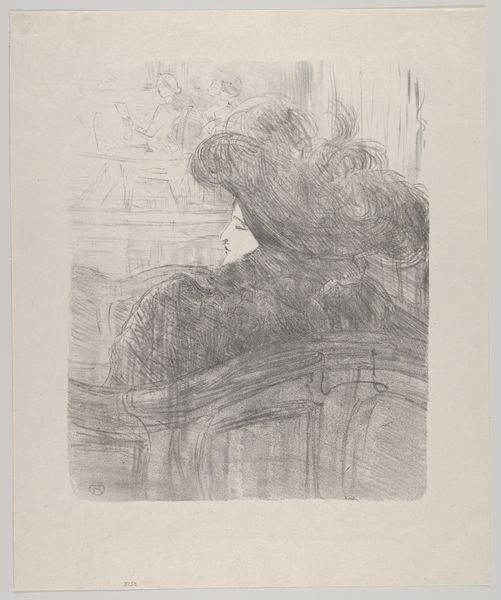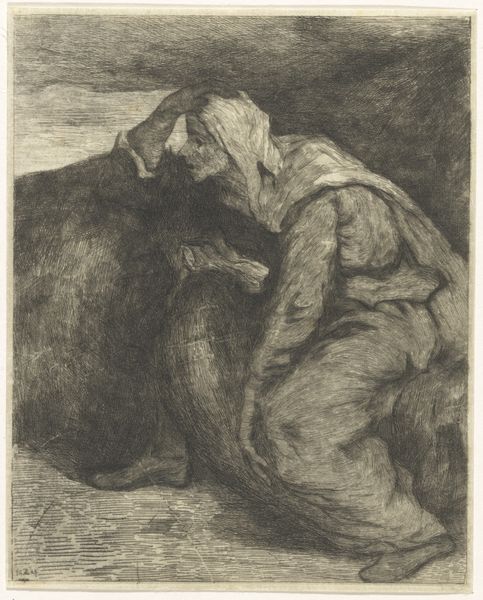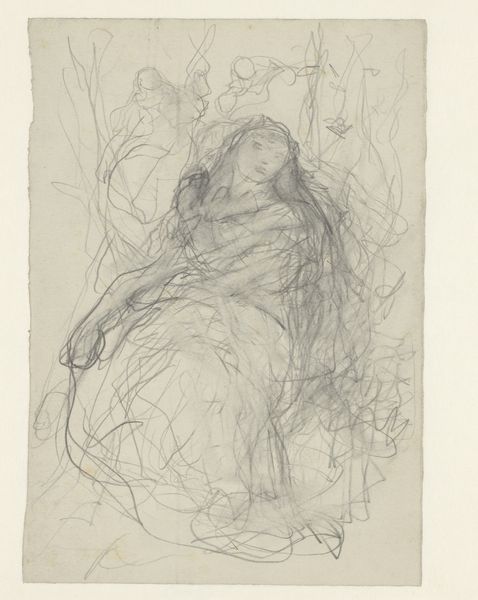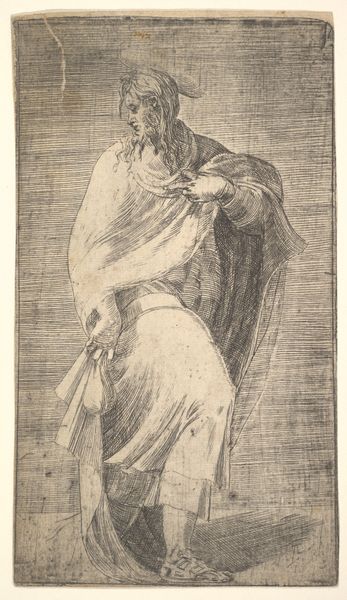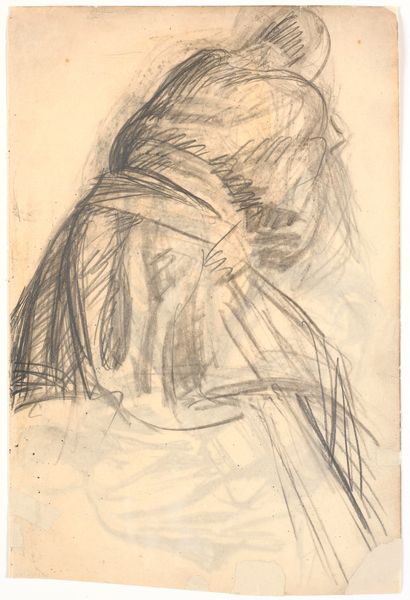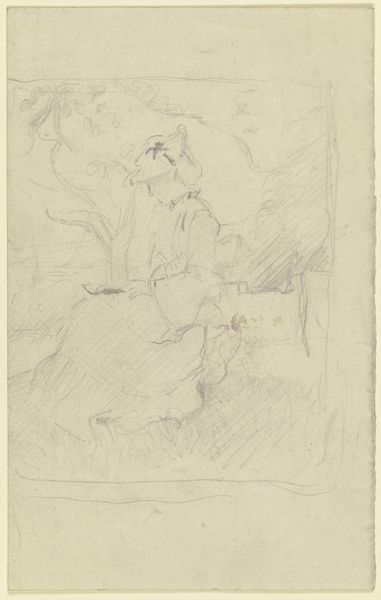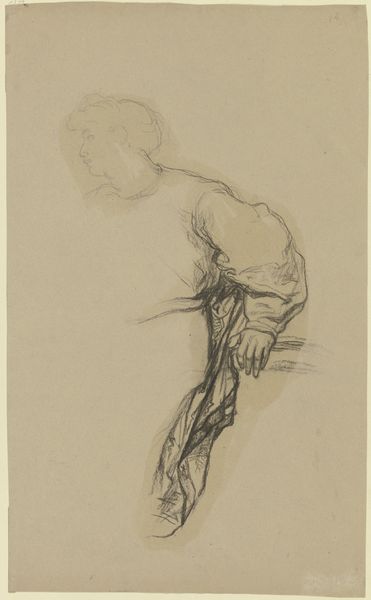
drawing, paper, chalk, graphite
#
portrait
#
drawing
#
figuration
#
paper
#
chalk
#
graphite
#
realism
Copyright: Public Domain
Curator: This is "Sitzende Frau beim Handarbeiten," or "Seated Woman Sewing," by Louis Eysen, created in 1883. It's rendered with graphite and chalk on paper. Looking at this, I'm immediately drawn to its contemplative mood; there’s a sense of quiet, domestic intimacy. What are your first impressions? Editor: There's an undeniable intimacy in it. But looking at it through a critical lens, I am thinking about how it romanticizes the domestic sphere, confining women to this realm of labour. The loose, unfinished quality of the sketch softens the harsh realities of women's work in the 19th century, especially when that work was so often unpaid and undervalued. Curator: Absolutely, there's a tension there. On one hand, Eysen is simply capturing a moment of everyday life. Yet, I am unsure; her gaze is so focused on her needlework and the angle that she holds her head evokes this incredible tenderness in me. Almost devotional. Editor: But even devotion, or rather the social expectation of a women's devotion to the household and familial comfort, can be another cage. Look at the composition—the way the light falls almost exclusively on her, shrouding her in a soft luminescence, further highlights her absorption in this labor. She is both idealized and rendered invisible in society. Curator: Do you think, perhaps, he was highlighting the woman’s skills, in particular, by focusing the study on this quiet moment? Craft work and sewing especially had become so essential at the time, didn't they? Editor: That's a fair point, because a lot of female labour were very deliberately obscured, or minimized to be a hobby for women only, it's equally valid to believe that there are hints about that craft here. But consider the artistic milieu: Realism aimed to depict ordinary life without idealization. This begs the question: who benefits from a woman being only understood in this kind of domestic role? What realities of the industrial revolution might this mask? Curator: Hmm. Those points provide such an important angle for considering this artwork within the history of representations of women's labor. Thanks to your view, I have seen and come away with a totally new dimension of that craft! Editor: Absolutely! This type of visual analysis also reveals those power structures shaping everyday perceptions and experiences. A conversation about this allows for deeper, and more dynamic art history for us to pursue together.
Comments
No comments
Be the first to comment and join the conversation on the ultimate creative platform.
